
Sandro Botticelli Giclée Fine Art Prints 2 of 5
1445-1510
Italian Quattrocento Painter
Sandro Botticelli, born in Florence in 1445, is one of the rare artists whose name alone conjures up an entire era - the Florentine Renaissance. His works, especially "The Birth of Venus" and "La Primavera," seem to define not just the spirit of the Renaissance, but the very essence of beauty itself. In a world that valued both intellectual rigor and sensuous pleasure, Botticelli found a way to balance these two impulses, creating paintings that are as much about thought as they are about aesthetic delight. Botticelli’s world was one where philosophy, myth, and faith mingled seamlessly, and his art captures that complexity with extraordinary grace.
Botticelli’s unusual nickname, meaning “little barrel,” was a hand-me-down from his older brother, Giovanni, who worked as a pawnbroker. Yet it’s difficult to imagine a less appropriate name for an artist whose work was defined by elegance, fluidity, and an almost weightless quality. Like many Renaissance figures, much of what we know about Botticelli’s life comes from Giorgio Vasari, whose "Lives of the Most Eminent Painters, Sculptors, & Architects" offers a lively, if occasionally inaccurate, account of Botticelli’s career. Vasari paints him as a dedicated artist, a figure deeply entrenched in the complex world of 15th-century Florence, where beauty and power were inextricably linked.
Botticelli’s early life was shaped by his apprenticeship with the renowned painter Filippo Lippi, whose delicate lines and lyrical forms left an indelible mark on his student. Lippi taught Botticelli not just the mechanics of painting, but the importance of creating a harmonious balance between the physical and the spiritual. Even in Botticelli’s later works, this sensibility is clear - his figures seem to inhabit a world that is both divine and intensely human, where beauty becomes a pathway to understanding deeper truths.
By the 1470s, Botticelli had established himself as an independent master with his own workshop in Florence. His early works, like the "Fortitude" (1470), already demonstrate his ability to convey psychological depth through gesture and expression. These early paintings, often small in scale, reveal a growing mastery over form, line, and movement, as seen in his panels depicting "Judith" and "Holofernes". Botticelli’s figures - elegant and poised - are always rendered with a refined sensibility, creating a delicate balance between idealization and reality.
It was in the late 1470s and early 1480s that Botticelli entered his full maturity as an artist. His works during this period reveal a consummate skill at creating narratives that feel both timeless and immediate. He had a particular gift for translating complex texts - whether the lives of saints or Dante’s "Divine Comedy" - into images that retained the richness of their original form, while also offering something more: a visual experience that resonated with emotional depth. This mastery is perhaps most evident in his religious works, such as the "Madonna and Child" paintings, which are suffused with a gentle, contemplative beauty. Botticelli’s Virgins are not just devotional figures, but fully realized women, imbued with a quiet dignity that elevates them beyond their religious symbolism.
Botticelli’s ability to blend religious devotion with secular beauty is perhaps best seen in his mythological works, where the boundaries between the sacred and the profane blur in fascinating ways. His portraits - whether of Giuliano de’ Medici or anonymous women - are equally captivating. His portrait of Giuliano, painted after the Pazzi conspiracy of 1478, is as much an act of commemoration as it is an aesthetic statement, capturing both the gravity of loss and the inherent grace of the subject.
In the mid-1470s, Botticelli embarked on the creation of his most iconic works: "La Primavera" and "The Birth of Venus". These paintings, both commissions for the powerful Medici family, speak to the intellectual and cultural richness of Florence at the time. They are not merely decorative works; rather, they are complex allegories, steeped in the humanist philosophy that dominated the period. "La Primavera" is a visual celebration of love and marriage, a hymn to the renewal of life and nature, while "The Birth of Venus" transforms the Classical goddess into a symbol of divine beauty and creative power. Botticelli’s Venus, emerging from the sea, is not just a figure of myth but an embodiment of the very ideal of beauty itself.
These mythological paintings were commissioned for domestic settings, intended to celebrate marriage and love. Yet, in Botticelli’s hands, they become more than mere allegories of courtly love. They explore broader themes of transformation, renewal, and the search for beauty in a world that was often violent and unpredictable. His figures - whether Venus or the Three Graces - are rendered with an exquisite attention to form, their movements both graceful and purposeful. In "The Birth of Venus", the goddess stands as a timeless icon of beauty, her pose reminiscent of Classical sculptures, yet imbued with a new, Renaissance sense of vitality.
But while Botticelli’s mythological works are perhaps his most famous, his religious paintings during this time are no less significant. His frescoes in the Sistine Chapel, completed in the early 1480s, are grand in scale yet intimate in their emotional resonance. His figures, whether Christ or saints, are rendered with a sense of spiritual intensity that speaks to Botticelli’s own deeply held religious convictions.
As Botticelli aged, his art took on a darker, more introspective tone, a shift that can be attributed to the political and religious upheavals that gripped Florence in the late 15th century. The rise of the Dominican preacher Girolamo Savonarola, whose fiery sermons denounced the decadence of the Medici and their followers, had a profound impact on Botticelli. Some historians even suggest that Botticelli destroyed some of his secular works during the infamous "Bonfire of the Vanities" in 1497, though this claim remains speculative.
What is certain is that Botticelli’s later works, such as the "Mystic Nativity" (1500), reflect a growing preoccupation with themes of salvation, redemption, and divine judgment. These paintings, with their elongated figures and heightened emotional intensity, mark a departure from the idealized beauty of his earlier works. Botticelli, once the painter of ethereal goddesses, became a chronicler of human frailty and the quest for spiritual truth.
In his final years, Botticelli worked on illustrations for Dante’s "Divine Comedy", a project that would remain unfinished at the time of his death in 1510. These drawings, like his later paintings, reveal a more somber, introspective artist, grappling with the weight of his own mortality. Despite Vasari’s claims that Botticelli died impoverished and forgotten, evidence suggests that he remained relatively comfortable, continuing to receive commissions throughout his life.
Sandro Botticelli’s legacy endures, not just in the iconic images of "Venus" and "La Primavera", but in the way his art continues to speak to the deepest human concerns: love, beauty, faith, and the search for meaning. His paintings are not merely beautiful objects but invitations to contemplate the complexities of existence, rendered with a grace and sensitivity that remain as compelling today as they were five centuries ago. Botticelli’s genius lies in his ability to capture both the ethereal and the earthly, the divine and the human, in a way that transcends time and place.
Botticelli’s unusual nickname, meaning “little barrel,” was a hand-me-down from his older brother, Giovanni, who worked as a pawnbroker. Yet it’s difficult to imagine a less appropriate name for an artist whose work was defined by elegance, fluidity, and an almost weightless quality. Like many Renaissance figures, much of what we know about Botticelli’s life comes from Giorgio Vasari, whose "Lives of the Most Eminent Painters, Sculptors, & Architects" offers a lively, if occasionally inaccurate, account of Botticelli’s career. Vasari paints him as a dedicated artist, a figure deeply entrenched in the complex world of 15th-century Florence, where beauty and power were inextricably linked.
Botticelli’s early life was shaped by his apprenticeship with the renowned painter Filippo Lippi, whose delicate lines and lyrical forms left an indelible mark on his student. Lippi taught Botticelli not just the mechanics of painting, but the importance of creating a harmonious balance between the physical and the spiritual. Even in Botticelli’s later works, this sensibility is clear - his figures seem to inhabit a world that is both divine and intensely human, where beauty becomes a pathway to understanding deeper truths.
By the 1470s, Botticelli had established himself as an independent master with his own workshop in Florence. His early works, like the "Fortitude" (1470), already demonstrate his ability to convey psychological depth through gesture and expression. These early paintings, often small in scale, reveal a growing mastery over form, line, and movement, as seen in his panels depicting "Judith" and "Holofernes". Botticelli’s figures - elegant and poised - are always rendered with a refined sensibility, creating a delicate balance between idealization and reality.
It was in the late 1470s and early 1480s that Botticelli entered his full maturity as an artist. His works during this period reveal a consummate skill at creating narratives that feel both timeless and immediate. He had a particular gift for translating complex texts - whether the lives of saints or Dante’s "Divine Comedy" - into images that retained the richness of their original form, while also offering something more: a visual experience that resonated with emotional depth. This mastery is perhaps most evident in his religious works, such as the "Madonna and Child" paintings, which are suffused with a gentle, contemplative beauty. Botticelli’s Virgins are not just devotional figures, but fully realized women, imbued with a quiet dignity that elevates them beyond their religious symbolism.
Botticelli’s ability to blend religious devotion with secular beauty is perhaps best seen in his mythological works, where the boundaries between the sacred and the profane blur in fascinating ways. His portraits - whether of Giuliano de’ Medici or anonymous women - are equally captivating. His portrait of Giuliano, painted after the Pazzi conspiracy of 1478, is as much an act of commemoration as it is an aesthetic statement, capturing both the gravity of loss and the inherent grace of the subject.
In the mid-1470s, Botticelli embarked on the creation of his most iconic works: "La Primavera" and "The Birth of Venus". These paintings, both commissions for the powerful Medici family, speak to the intellectual and cultural richness of Florence at the time. They are not merely decorative works; rather, they are complex allegories, steeped in the humanist philosophy that dominated the period. "La Primavera" is a visual celebration of love and marriage, a hymn to the renewal of life and nature, while "The Birth of Venus" transforms the Classical goddess into a symbol of divine beauty and creative power. Botticelli’s Venus, emerging from the sea, is not just a figure of myth but an embodiment of the very ideal of beauty itself.
These mythological paintings were commissioned for domestic settings, intended to celebrate marriage and love. Yet, in Botticelli’s hands, they become more than mere allegories of courtly love. They explore broader themes of transformation, renewal, and the search for beauty in a world that was often violent and unpredictable. His figures - whether Venus or the Three Graces - are rendered with an exquisite attention to form, their movements both graceful and purposeful. In "The Birth of Venus", the goddess stands as a timeless icon of beauty, her pose reminiscent of Classical sculptures, yet imbued with a new, Renaissance sense of vitality.
But while Botticelli’s mythological works are perhaps his most famous, his religious paintings during this time are no less significant. His frescoes in the Sistine Chapel, completed in the early 1480s, are grand in scale yet intimate in their emotional resonance. His figures, whether Christ or saints, are rendered with a sense of spiritual intensity that speaks to Botticelli’s own deeply held religious convictions.
As Botticelli aged, his art took on a darker, more introspective tone, a shift that can be attributed to the political and religious upheavals that gripped Florence in the late 15th century. The rise of the Dominican preacher Girolamo Savonarola, whose fiery sermons denounced the decadence of the Medici and their followers, had a profound impact on Botticelli. Some historians even suggest that Botticelli destroyed some of his secular works during the infamous "Bonfire of the Vanities" in 1497, though this claim remains speculative.
What is certain is that Botticelli’s later works, such as the "Mystic Nativity" (1500), reflect a growing preoccupation with themes of salvation, redemption, and divine judgment. These paintings, with their elongated figures and heightened emotional intensity, mark a departure from the idealized beauty of his earlier works. Botticelli, once the painter of ethereal goddesses, became a chronicler of human frailty and the quest for spiritual truth.
In his final years, Botticelli worked on illustrations for Dante’s "Divine Comedy", a project that would remain unfinished at the time of his death in 1510. These drawings, like his later paintings, reveal a more somber, introspective artist, grappling with the weight of his own mortality. Despite Vasari’s claims that Botticelli died impoverished and forgotten, evidence suggests that he remained relatively comfortable, continuing to receive commissions throughout his life.
Sandro Botticelli’s legacy endures, not just in the iconic images of "Venus" and "La Primavera", but in the way his art continues to speak to the deepest human concerns: love, beauty, faith, and the search for meaning. His paintings are not merely beautiful objects but invitations to contemplate the complexities of existence, rendered with a grace and sensitivity that remain as compelling today as they were five centuries ago. Botticelli’s genius lies in his ability to capture both the ethereal and the earthly, the divine and the human, in a way that transcends time and place.
106 Botticelli Artworks
Page 2 of 5
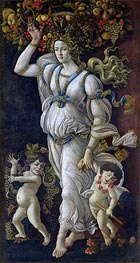
Giclée Canvas Print
$54.63
$54.63
SKU: 6243-BSF
Sandro Botticelli
Original Size:192 x 105 cm
Musee Conde, Chantilly, France
Sandro Botticelli
Original Size:192 x 105 cm
Musee Conde, Chantilly, France
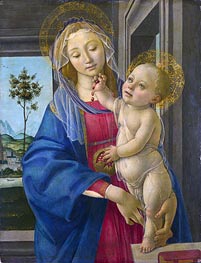
Giclée Canvas Print
$63.08
$63.08
SKU: 10264-BSF
Sandro Botticelli
Original Size:67.9 x 52.7 cm
National Gallery, London, UK
Sandro Botticelli
Original Size:67.9 x 52.7 cm
National Gallery, London, UK
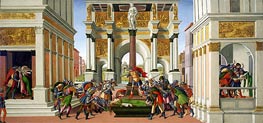
Giclée Canvas Print
$54.63
$54.63
SKU: 6239-BSF
Sandro Botticelli
Original Size:83.8 x 176.8 cm
Isabella Stewart Gardner Museum, Boston, USA
Sandro Botticelli
Original Size:83.8 x 176.8 cm
Isabella Stewart Gardner Museum, Boston, USA

Giclée Canvas Print
$65.21
$65.21
SKU: 167-BSF
Sandro Botticelli
Original Size:55.4 x 43 cm
Gemaldegalerie, Berlin, Germany
Sandro Botticelli
Original Size:55.4 x 43 cm
Gemaldegalerie, Berlin, Germany
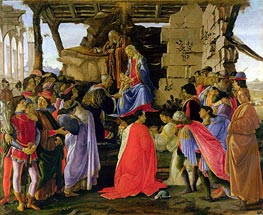
Giclée Canvas Print
$67.59
$67.59
SKU: 163-BSF
Sandro Botticelli
Original Size:111 x 134 cm
Galleria degli Uffizi, Florence, Italy
Sandro Botticelli
Original Size:111 x 134 cm
Galleria degli Uffizi, Florence, Italy
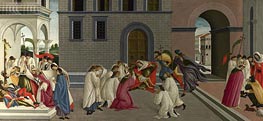
Giclée Canvas Print
$63.35
$63.35
SKU: 10269-BSF
Sandro Botticelli
Original Size:64.8 x 139.7 cm
National Gallery, London, UK
Sandro Botticelli
Original Size:64.8 x 139.7 cm
National Gallery, London, UK

Giclée Canvas Print
$54.63
$54.63
SKU: 10197-BSF
Sandro Botticelli
Original Size:66 x 182 cm
Gemaldegalerie Alte Meister, Dresden, Germany
Sandro Botticelli
Original Size:66 x 182 cm
Gemaldegalerie Alte Meister, Dresden, Germany
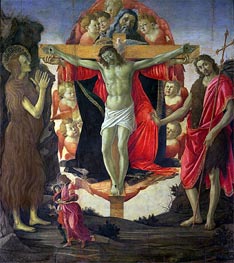
Giclée Canvas Print
$74.07
$74.07
SKU: 6229-BSF
Sandro Botticelli
Original Size:214 x 192.4 cm
Courtauld Institute of Art, London, UK
Sandro Botticelli
Original Size:214 x 192.4 cm
Courtauld Institute of Art, London, UK
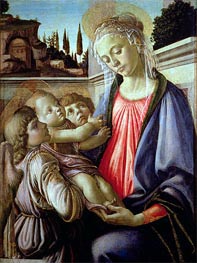
Giclée Canvas Print
$76.14
$76.14
SKU: 6233-BSF
Sandro Botticelli
Original Size:99 x 72 cm
National Museum of Capodimonte, Venice, Italy
Sandro Botticelli
Original Size:99 x 72 cm
National Museum of Capodimonte, Venice, Italy
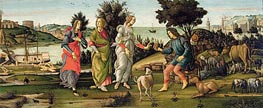
Giclée Canvas Print
$54.63
$54.63
SKU: 10195-BSF
Sandro Botticelli
Original Size:81 x 197 cm
Private Collection
Sandro Botticelli
Original Size:81 x 197 cm
Private Collection
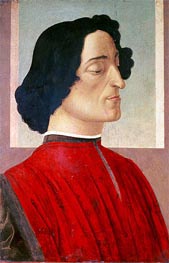
Giclée Canvas Print
$54.63
$54.63
SKU: 6224-BSF
Sandro Botticelli
Original Size:60 x 41 cm
Accademia Carrara, Bergamo, Italy
Sandro Botticelli
Original Size:60 x 41 cm
Accademia Carrara, Bergamo, Italy
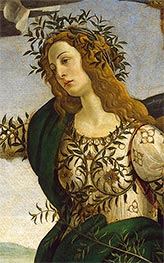
Giclée Canvas Print
$54.63
$54.63
SKU: 17291-BSF
Sandro Botticelli
Original Size:unknown
Galleria degli Uffizi, Florence, Italy
Sandro Botticelli
Original Size:unknown
Galleria degli Uffizi, Florence, Italy
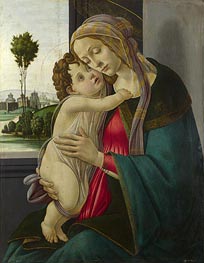
Giclée Canvas Print
$106.89
$106.89
SKU: 10265-BSF
Sandro Botticelli
Original Size:83.2 x 64.8 cm
National Gallery, London, UK
Sandro Botticelli
Original Size:83.2 x 64.8 cm
National Gallery, London, UK
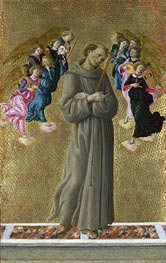
Giclée Canvas Print
$54.63
$54.63
SKU: 6253-BSF
Sandro Botticelli
Original Size:49.5 x 31.8 cm
National Gallery, London, UK
Sandro Botticelli
Original Size:49.5 x 31.8 cm
National Gallery, London, UK
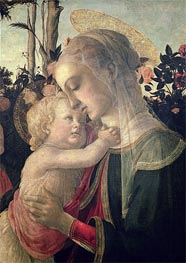
Giclée Canvas Print
$71.96
$71.96
SKU: 6279-BSF
Sandro Botticelli
Original Size:unknown
Louvre Museum, Paris, France
Sandro Botticelli
Original Size:unknown
Louvre Museum, Paris, France
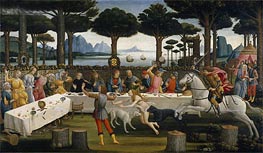
Giclée Canvas Print
$79.88
$79.88
SKU: 10270-BSF
Sandro Botticelli
Original Size:84 x 142 cm
Prado Museum, Madrid, Spain
Sandro Botticelli
Original Size:84 x 142 cm
Prado Museum, Madrid, Spain
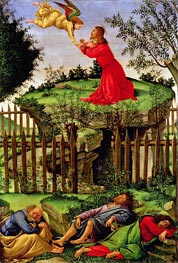
Giclée Canvas Print
$68.80
$68.80
SKU: 6255-BSF
Sandro Botticelli
Original Size:unknown
Capilla Real, Granada, Spain
Sandro Botticelli
Original Size:unknown
Capilla Real, Granada, Spain

Giclée Canvas Print
$54.63
$54.63
SKU: 6251-BSF
Sandro Botticelli
Original Size:50.2 x 135.9 cm
National Gallery, London, UK
Sandro Botticelli
Original Size:50.2 x 135.9 cm
National Gallery, London, UK
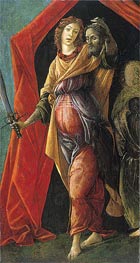
Giclée Canvas Print
$54.63
$54.63
SKU: 6267-BSF
Sandro Botticelli
Original Size:36.5 x 20 cm
Rijksmuseum, Amsterdam, Netherlands
Sandro Botticelli
Original Size:36.5 x 20 cm
Rijksmuseum, Amsterdam, Netherlands

Giclée Canvas Print
$82.80
$82.80
SKU: 18797-BSF
Sandro Botticelli
Original Size:136.5 x 136.5 cm
Gemaldegalerie, Berlin, Germany
Sandro Botticelli
Original Size:136.5 x 136.5 cm
Gemaldegalerie, Berlin, Germany
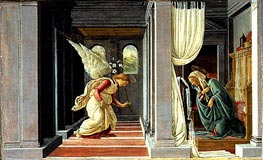
Giclée Canvas Print
$54.63
$54.63
SKU: 6265-BSF
Sandro Botticelli
Original Size:19.1 x 31.4 cm
Metropolitan Museum of Art, New York, USA
Sandro Botticelli
Original Size:19.1 x 31.4 cm
Metropolitan Museum of Art, New York, USA
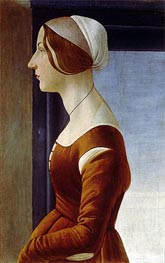
Giclée Canvas Print
$66.79
$66.79
SKU: 166-BSF
Sandro Botticelli
Original Size:61 x 40 cm
Palazzo Pitti, Florence, Italy
Sandro Botticelli
Original Size:61 x 40 cm
Palazzo Pitti, Florence, Italy
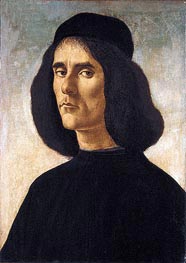
Giclée Canvas Print
$54.63
$54.63
SKU: 10193-BSF
Sandro Botticelli
Original Size:49 x 35 cm
Private Collection
Sandro Botticelli
Original Size:49 x 35 cm
Private Collection
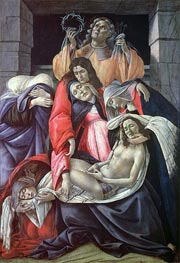
Giclée Canvas Print
$69.47
$69.47
SKU: 6257-BSF
Sandro Botticelli
Original Size:107 x 71 cm
Museo Poldi Pezzoli, Milan, Italy
Sandro Botticelli
Original Size:107 x 71 cm
Museo Poldi Pezzoli, Milan, Italy